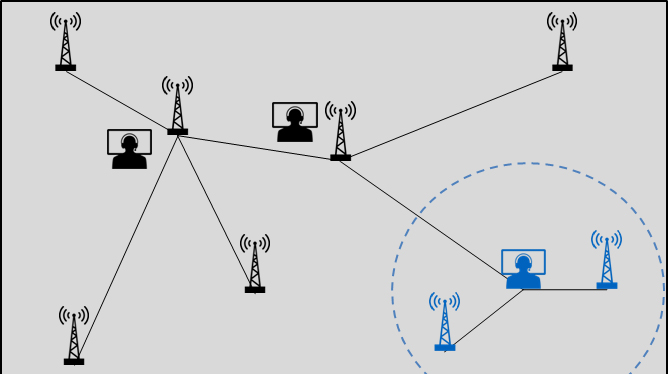 In 1991, the ASTRO system was born. With the anticipation of Project 25 (P25) – designed to create a user-driven, flexible, and open standard for radio communications – Motorola built ASTRO as a land mobile radio (LMR) platform to comply with the P25 standard. To celebrate ASTRO’s 25th year, this series will look at the past, present, and future of ASTRO 25 and answer the most pressing questions being asked by radio users today.
In 1991, the ASTRO system was born. With the anticipation of Project 25 (P25) – designed to create a user-driven, flexible, and open standard for radio communications – Motorola built ASTRO as a land mobile radio (LMR) platform to comply with the P25 standard. To celebrate ASTRO’s 25th year, this series will look at the past, present, and future of ASTRO 25 and answer the most pressing questions being asked by radio users today.
P25 hardware is easily understood – it is a system’s machinery and physical infrastructure. Similarly, P25 software is simple to explain – the coded programs and other operating information used by the computers, like software for any other application. But intelligent middleware? That one continually stumps radio users and partners alike. Agencies need to understand what intelligent middleware is to fully realize just how much they need it. And to understand what intelligent middleware is, we need to understand where it came from.
Where did intelligent middleware come from?
Motorola originally introduced unified services for ASTRO 25 to provide a common source of information from which multiple applications could pull to get reliable, consistent data. For example, many applications might want to know the GPS location of a radio or if a specific radio was turned on and registered on the system. Rather than have multiple apps ping the radio for the same information, it would be more efficient for a service to ping the radio once and then disseminate the results to all applications needing that information. This reduces radio traffic, reduces battery consumption and provides consistent information across multiple applications.
What is intelligent middleware?
Simply put, intelligent middleware is the next generation of unified software that bridges across applications and networks to provide a suite of services that provide radio users with a consistent experience across devices, platforms and applications. Information such as talkgroups, location and presence is available to any application regardless of the network or device type. For example, you may have multiple mapping applications, one for CAD, one for command staff and another for the field. With intelligent middleware all your applications have access to the same data in order to plot the location for ASTRO 25 radios and LTE broadband devices. As another example, you may have multiple applications that need to know the definition of a group (mapping apps, messaging apps, workflow apps, report writing apps). Allowing each apps to create their own definitions of a group introduces tremendous overhead as you onboard and offboard staff and change assignments. These types of changes would need to be made in multiple places. Failure to do this accurately could result in people not getting the communications they need when they need it resulting in inefficiencies and potentially decreases in safety. Centralizing this ensures consistency across all applications.
Why is intelligence middleware important for my agency?
Increasingly agencies are adopting smartphone technology in order to be more efficient and keep officers safe. However, these devices shouldn’t be outside of the normal agency communication structures. Integration is key. The convergence of applications and services is a key step toward that convergence of P25 and broadband. How you are connected becomes less important because your workgroups follow with you as you move across different environments. Whether you are on a P25 or broadband network, your workgroups are always available to you to collaborate. With middleware, abstracting your applications from various network interfaces, third party developers do not need to develop unique applications or interfaces for each network simplifying integration.
Intelligent Middleware is built into every new ASTRO 25 system shipping today which means you may already have the foundations of convergence today. To learn more about intelligent middleware, visit www.motorolasolutions.com/intelligentmiddleware




